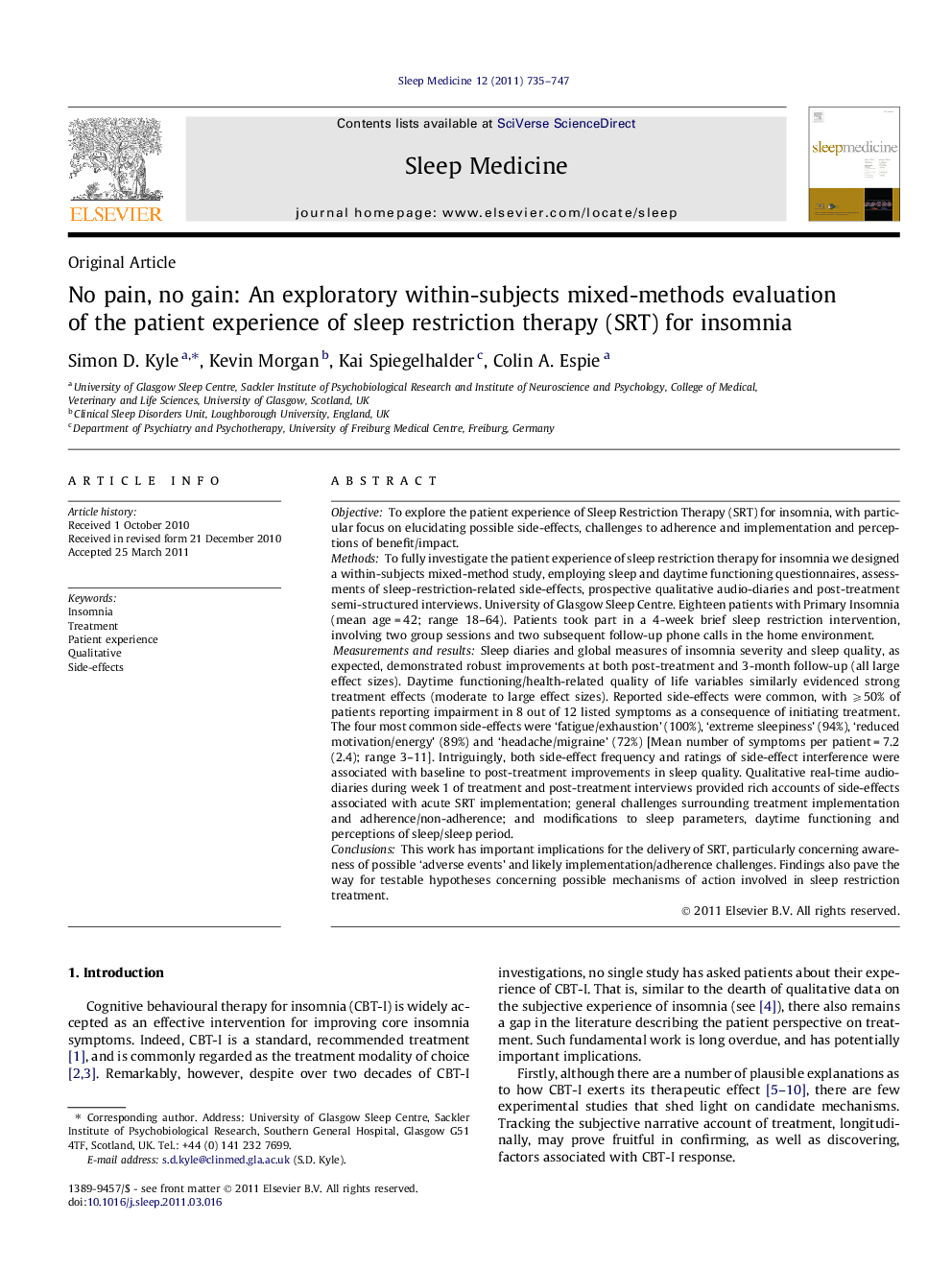| کد مقاله | کد نشریه | سال انتشار | مقاله انگلیسی | نسخه تمام متن |
|---|---|---|---|---|
| 3176321 | 1200259 | 2011 | 13 صفحه PDF | دانلود رایگان |

ObjectiveTo explore the patient experience of Sleep Restriction Therapy (SRT) for insomnia, with particular focus on elucidating possible side-effects, challenges to adherence and implementation and perceptions of benefit/impact.MethodsTo fully investigate the patient experience of sleep restriction therapy for insomnia we designed a within-subjects mixed-method study, employing sleep and daytime functioning questionnaires, assessments of sleep-restriction-related side-effects, prospective qualitative audio-diaries and post-treatment semi-structured interviews. University of Glasgow Sleep Centre. Eighteen patients with Primary Insomnia (mean age = 42; range 18–64). Patients took part in a 4-week brief sleep restriction intervention, involving two group sessions and two subsequent follow-up phone calls in the home environment.Measurements and resultsSleep diaries and global measures of insomnia severity and sleep quality, as expected, demonstrated robust improvements at both post-treatment and 3-month follow-up (all large effect sizes). Daytime functioning/health-related quality of life variables similarly evidenced strong treatment effects (moderate to large effect sizes). Reported side-effects were common, with ⩾50% of patients reporting impairment in 8 out of 12 listed symptoms as a consequence of initiating treatment. The four most common side-effects were ‘fatigue/exhaustion’ (100%), ‘extreme sleepiness’ (94%), ‘reduced motivation/energy’ (89%) and ‘headache/migraine’ (72%) [Mean number of symptoms per patient = 7.2 (2.4); range 3–11]. Intriguingly, both side-effect frequency and ratings of side-effect interference were associated with baseline to post-treatment improvements in sleep quality. Qualitative real-time audio-diaries during week 1 of treatment and post-treatment interviews provided rich accounts of side-effects associated with acute SRT implementation; general challenges surrounding treatment implementation and adherence/non-adherence; and modifications to sleep parameters, daytime functioning and perceptions of sleep/sleep period.ConclusionsThis work has important implications for the delivery of SRT, particularly concerning awareness of possible ‘adverse events’ and likely implementation/adherence challenges. Findings also pave the way for testable hypotheses concerning possible mechanisms of action involved in sleep restriction treatment.
Journal: Sleep Medicine - Volume 12, Issue 8, September 2011, Pages 735–747